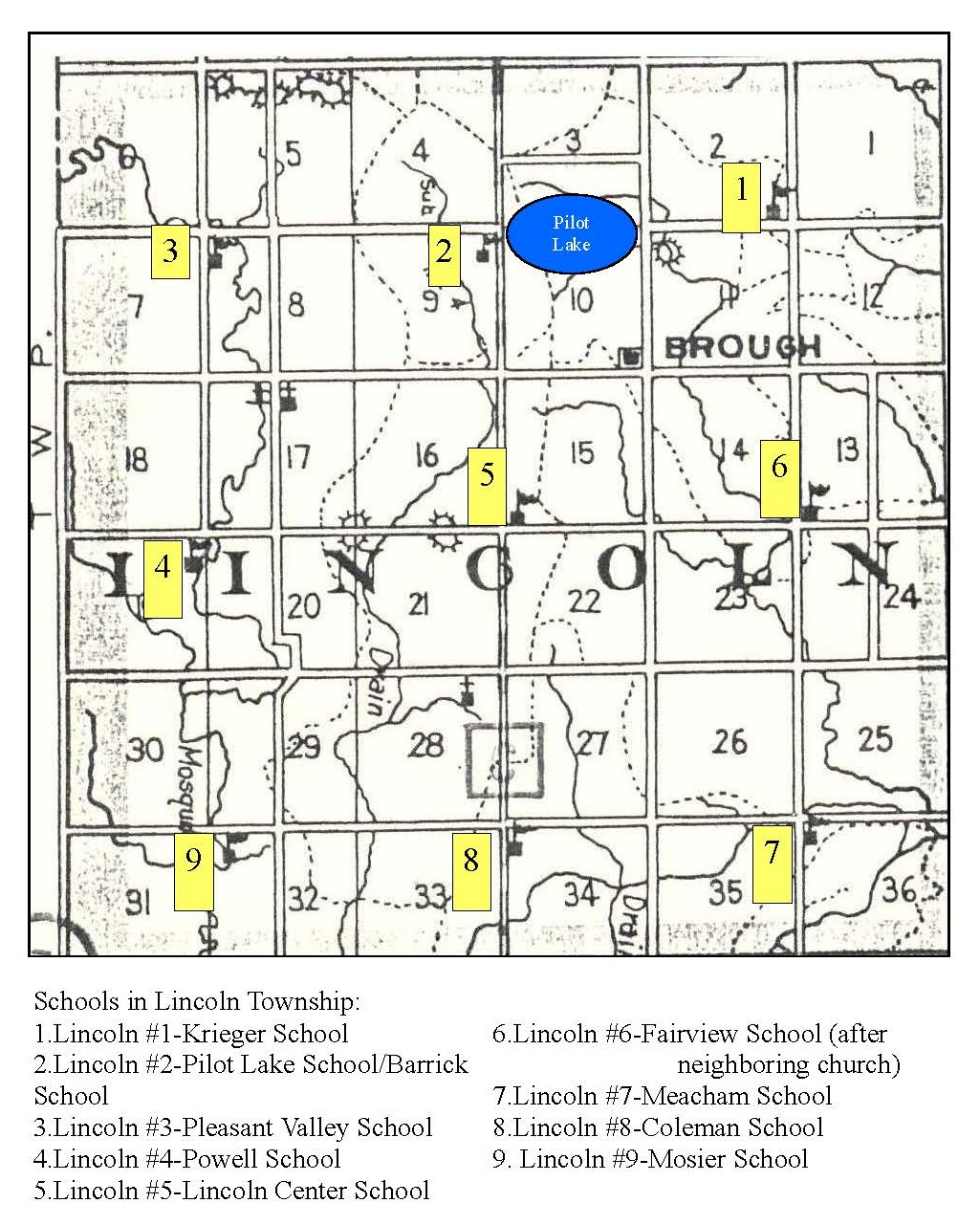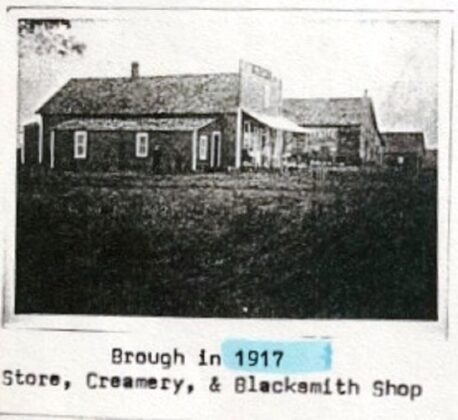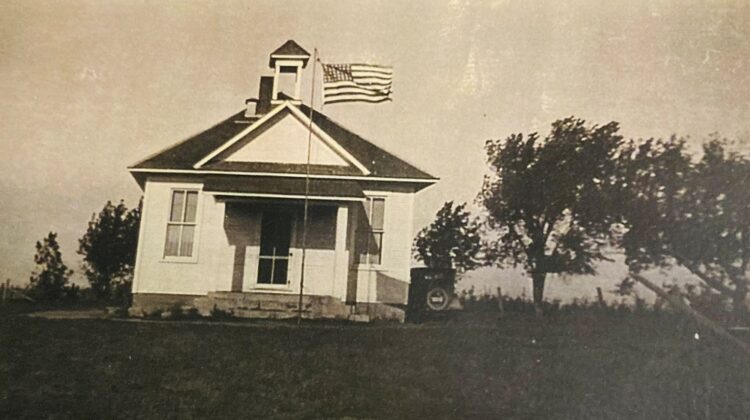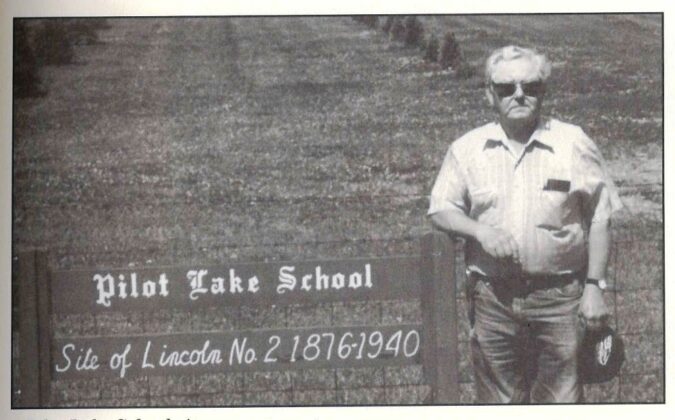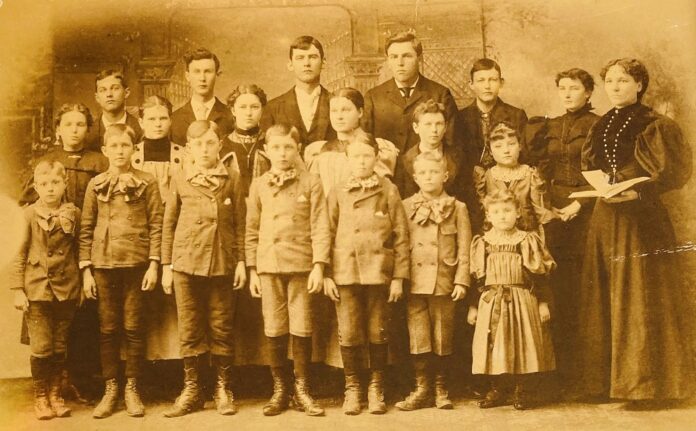
This article comprises research conducted by Sue Leslie, Myrna Griffith and Deanette Snyder.
In 1879 Lincoln Township was sparsely settled due to most of the land being held by speculators and capitalists, according to “The History of Dallas County, Iowa,” published by the Union Historical Co. in Des Moines in 1879.
The first settler in Lincoln Township, J. R. Powell, was instrumental in getting the township organized as it is today. Although it did have several one room schools, there were no towns of any size. It did, however, have a settlement known as Brough that was a main trading center for the area farmers at a time when going to town by horse and wagon was time consuming.
The settlement of Brough was eventually located at the corner of sections 10, 11, 14 and 15, and it included a creamery, blacksmith shop, a garage for farm machinery repair and a Modern Woodsmen of America hall.
Another landmark in the township was a large body of water known as Pilot Lake that was located north of Brough. In the early years, Mr. Clarke owned the 100 acres that included the lake and built a frame house on the stage coach road that passed the lake. There he had a store and a hotel that accommodated 40 guests with meals and lodging.
By 1923 both Brough and the buildings at Pilot Lake were gone, leaving no towns in Lincoln Township, a state of affairs that persists until today.
In 1926 Lincoln #4 and #7 were built, and nine schools dotted the township. Each school had a name as well as a number. Lincoln #1 was called the Krieger School, #2 Pilot Lake School or Barrick School, #3 Maple Grove, #4 Powell School, #5 Lincoln Center School, #6 Fairview School, #7 Meacham School, #8 Coleman School and #9 Mosier School.
In 1930 all the schools and out buildings were painted inside and out, and in 1937, following a picnic at Lincoln #4, a night out in Perry at the theater was enjoyed by all the teachers of the township.
Three generations of Flossie Jones Morrell’s family graduated from eighth grade at Lincoln #5: Doris Bradley Davis in 1891, Elva Davis Jones in 1915 and Flossie in 1949. Flossie remembered walking to school all eight of those years.
Another common memory was the Eighth Grade Examination that all country school students had to take if they wished to go on to high school. The examination was grueling, and the eighth graders studied all year to pass it. The test was taken at the county seat and could take several days. It covered the subjects of reading, orthography (spelling), arithmetic, grammar, geography, physiology, U.S. history, penmanship, music and civics of Iowa.
Those who graduated from schools north of #5 went to Dawson for high school. Those who graduated from schools to the south went to Washington Township. In 1950 Lincoln #5 was closed and moved to a farm two miles to the south.
Edith Piatt Booth was an early teacher at Fairview School, also known as Lincoln #6. She and her husband, William Booth, adopted their niece, Sara Ann Booth. Sara was a little slow so when Edith thought she should repeat a grade, the entire class was required to repeat the grade!
Jean Schwab attended #6 and remembered playing leap frog with the boys during recess. She also recalled Lois Klockentager as one of the best teachers they ever had. Lavonna Gibler was one of the last teachers at the school.
There were two Fairview Schools, both named after the nearby Fairview Church—an early one and a second built in the 1920s. Along with the church, this was the community center of that area of Lincoln Township. Both schools were eventually purchased by Charles Schwab and moved to his farm to be used as a garage and as a home for his hired man.
In 1953 Lincoln #1, #4 and #9 were sold at auction, and the rural schools disappeared.
In an ongoing effort to preserve the history of our township schools, we are seeking details on the names and locations of the other schools in Lincoln Township. If you have any information about these schools, such as their location or stories of students who attended them, our group would like to hear from you. Please contact Myrna Griffith at wpldirector@minburncomm.net, Deanette Snyder at deanettesnyder@gmail.com or Sue Leslie at densueles@aol.com.
